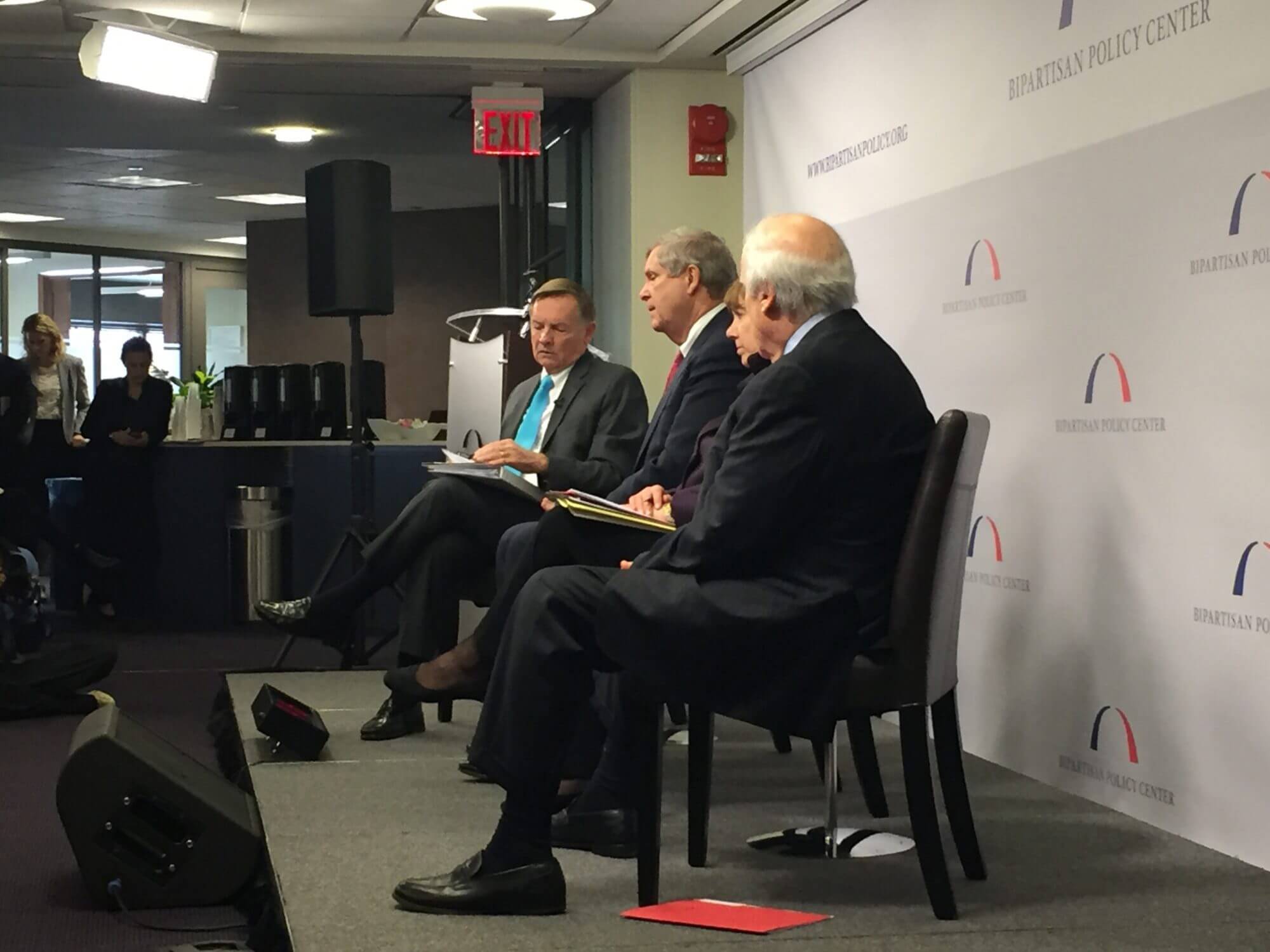WASHINGTON— Agriculture Secretary Tom Vilsack called on Congress Wednesday to renew a law that has been providing free and low-cost school meals to children for 50 years. The same day, the American Academy of Pediatrics said poor children are more likely to have health problems.
If students from low-income families do not have access to free meals, there can be serious health implications for U.S. children, Vilsack said in a speech at the Bipartisan Policy Center.
Last year, the Child Nutrition Act provided approximately 22 million students free or reduced-price lunches and 12 million students with breakfast, according to the United States Department of Agriculture Food and Nutrition Service. The law expired on Sept. 30. In 2010, it allotted $4.5 billion in new funds over 10 years for the federal child nutrition programs.
Poverty level is directly linked to nutrition, according to experts from the Agriculture Department. Children whose families are poor have less money to spend on groceries and often lack access to high-quality, nutritional foods.
“If our kids are not well fed, if they are not cared for in terms of health and if they are not well educated they will not be as competitive as we need them to be,” Vilsack said.
The Child Nutrition Act looks to increase access to meal programs, promote education about healthy eating, train people who serve school meals, help schools with financial need purchase better kitchen equipment and enhance health and safety standards for food sold in schools.
The American Academy of Pediatrics policy statement released on Wednesday bolstered Vilsack’s argument that poverty is directly linked to health problems in children.
An estimated 21.1 percent of U.S. children live in households designated as poor, defined by incomes lower than the federal poverty level of $24,230 for a family of four, and 42.9 percent of children live in households that were considered poor or near poor, according to statistics from the United States Census Bureau.
“We talk about poverty as a social problem, we talk about it as an economic problem, but for children, poverty it is a health problem,” said Sarah Jane Schwarzenberg, a member of the American Academy of Pediatrics Committee on Nutrition in a phone interview. “It puts their health at risk. We want people to understand how combating poverty improves and maximizes the health and wellbeing of children.”
Vilsack also pushed for expansion of federally funded food purchasing programs.
Approximately 48.1 million Americans, which includes 15.3 million children, live in households with limited or uncertain access to adequate food. The problem affects every county in the United States, according to census data.
In its policy statement, the AAP advocates for increased funding and expansion of the Special Supplemental Nutrition Program for Women, Infants and Children, and the Supplemental Nutrition Assistance Program, both of which provide federal aid for food purchasing assistance.
“An important thing is advocating strenuously for the preservation and the expansion for federally funded food programs,” said Schwarzenberg. “Programs like WIC and SNAP are extremely successful at fighting hunger and food insecurity.”
More than 45 million Americans who have low or no income, which includes approximately 20 million children, receive SNAP benefits, according to White House statistics.
“SNAP is a profoundly and effective anti-poverty tool,” said Vilsack. “We know that over 2 million kids would be in poverty if it weren’t for the SNAP.”
The AAP wants pediatrician offices across the nation to connect low-income patients with these federally funded initiatives.
“One of the difficult things is that families rarely speak up in their pediatrician’s office and tell their pediatrician that they don’t have enough money for food,” said Schwarzenberg. “But there are questions you can ask that will give tell them the opportunity to tell you about the hardships they are having and then you can refer them to appropriate programs.”
In January, President Barack Obama announced investments in ending child hunger, such as using Medicaid data to automatically link low-income children to school meals and researching SNAP’s role in helping children succeed.
Obama’s proposed budget for fiscal 2017 would allocate $12 billion for food programs to reduce childhood hunger during summer months when school is not in session.


